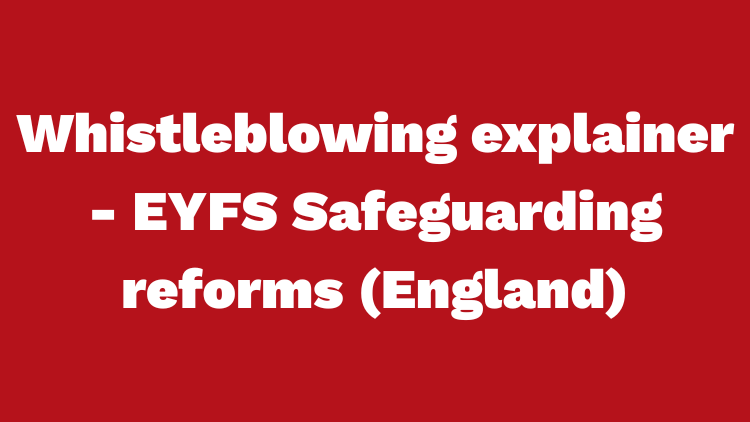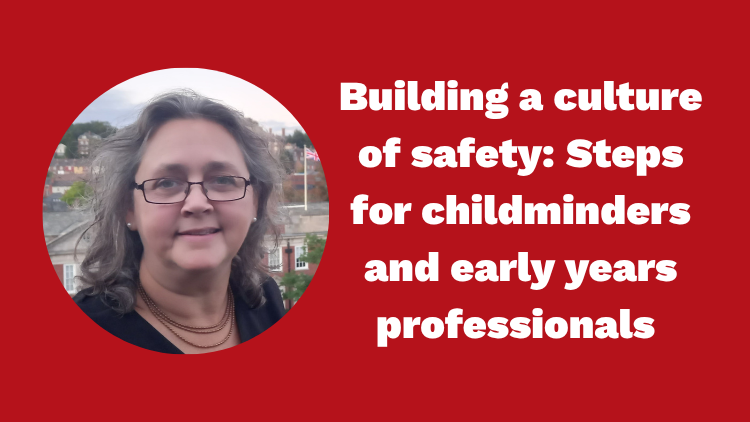By Zara Smith, Writer/Editor – Coram PACEY
Creating a safe and secure environment is at the heart of everything we do as childminders and early years professionals. Safety is not just about having rules, procedures of compliance programs in place – it’s about making sure that everyone, from the youngest child to the oldest staff member, feels protected, cared for, and able to thrive.
What does a culture of safety mean in early years settings?
A culture of safety is all about the shared beliefs, attitudes, values, and everyday practices that ensure safety is a top priority in your setting. A truly effective culture of safety doesn’t just protect children; it also equips them with the confidence and skills to help them keep themselves safe.
It is embedded through every daily interaction and the operations of the setting, and it is woven through the thoughts and actions of everyone within your setting think. When safety is truly part of your culture, it shows in every decision, every routine, and every interaction with children and families.
Key elements of a strong safety culture in early years
There are some considerations for creating a positive safety culture in your childminding or early years setting:
Shared values and clear expectations. Make sure everyone knows that safety comes first. Talk about it often and make it part of your setting’s values. Display your safety rules where everyone can see them and explain them to children in ways they understand.
Simple, effective policies and procedures. Have clear policies for things like picking up children, outdoor play, food safety, and emergency situations. Review these regularly and make sure all staff and helpers know what to do.
Leading by example. Children learn by watching adults. Show them how to use equipment safely, wash hands properly, and tidy up after play. When you take safety seriously, children will too.
Training and awareness. Keep your knowledge up to date with regular training for first aid, safeguarding, and risk assessment. Teach children about safety in age-appropriate ways, such as practicing fire drills or talking about stranger danger.
Open and honest communication. Encourage everyone—staff, children, and families—to speak up if they see something unsafe. Encourage and support adults to be professional curious. Ensure children know it’s okay to tell you if they feel worried or having concerns and that you hear them.
Learning from mistakes. If an accident or near miss happens, talk about it with others and reflect. What can you learn? How can you make things safer in the future? Include the children and their families as this helps everyone feel involved and valued.
Supporting well-being. Safety isn’t just about avoiding bumps and bruises. It’s also about emotional well-being. Make sure children feel safe to talk about their feelings and support your own mental health and that of your team.
Being open about strengths and areas to improve. Celebrate what you do well but also be honest about where you can do better. This openness helps everyone feel part of the journey towards a safer setting.
Demonstrate your commitment to safety
As a childminder or leader, you set the tone for safety in your setting. Talk about safety every day, reminding the children and adult why it matters. Be a good role model and always follow your own rules. Encourage others to do the same. Make sure those you work with have that they have the knowledge, resources and support they need to keep everyone safe. Listen to concerns and take them seriously, whether they come from a child, a parent or a colleague.
Keep everyone one up-to-date through regular safety meetings or briefings, even if it’s just a quick chat at the start of the day. Use technology—like group messages or newsletters—to share important safety updates with staff and families.
Always improving
A great safety culture is always growing and adapting. Keep reviewing your safety practices, learn from any incidents, and stay alert to new risks or changes in your environment. Involve children, staff and families in this process to make sure everyone’s voice is heard.
Safety is everyone’s job
Building a culture of safety in your setting is a team effort that should include the children, their families and your team. By making safety a shared value, talking openly, and always looking for ways to improve, you create a place where children can learn, play, and grow with confidence.
Remember: when safety is at the heart of your setting, everyone benefits – children, families, and staff alike.



